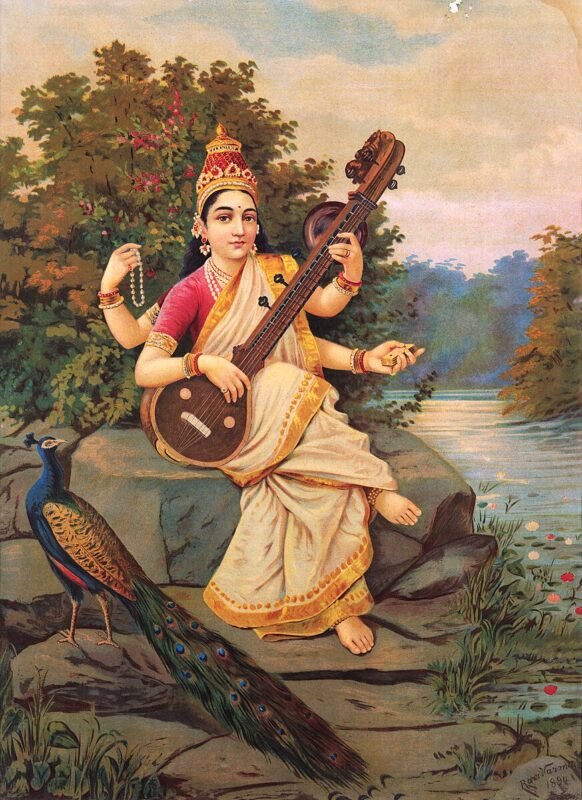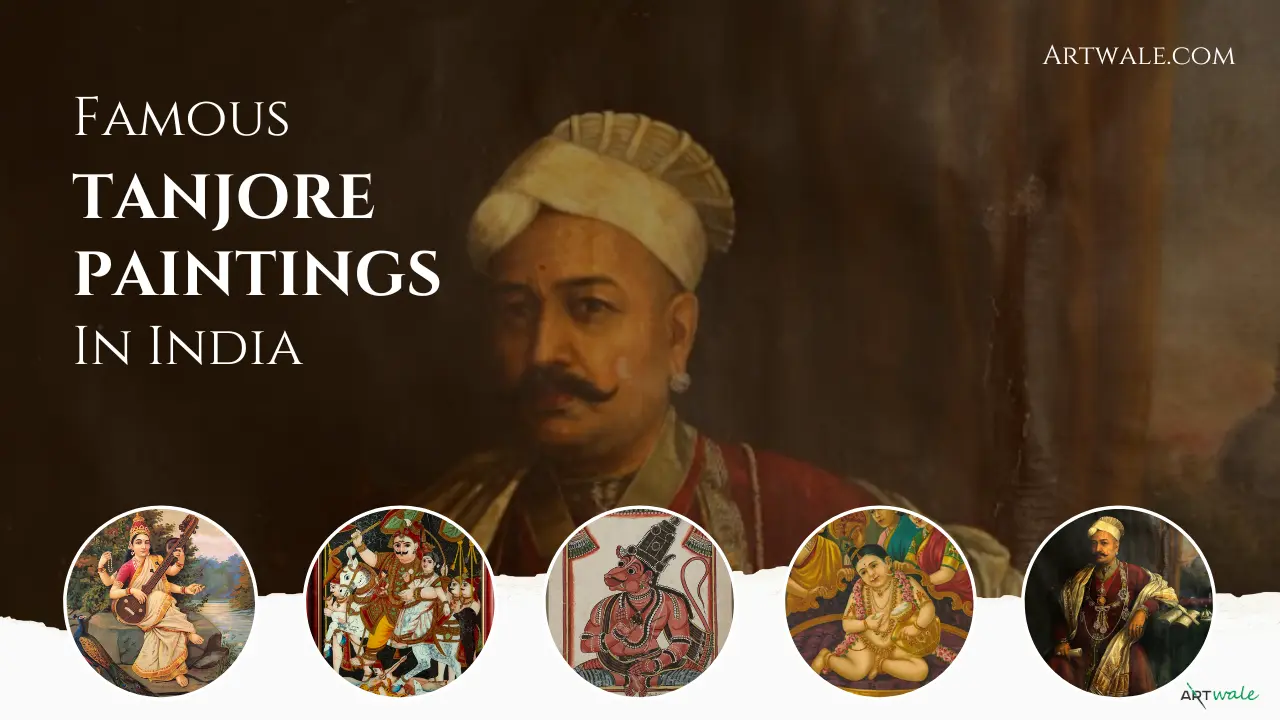Indian Art
Famous 5 Tanjore Paintings and Artists in India
Tanjore paintings, also known as Thanjavur paintings, are a classical South Indian art form that originated from the town of Thanjavur in Tamil Nadu. These paintings are renowned for their rich colors, surface richness, compact composition, and immense attention to detail.
They hold a unique place in the world of art due to their intricate designs and the use of gold foil, which adds a stunning sheen to the artworks. In this article, we explore the essence of Tanjore paintings and highlight the Top 5 Tanjore Paintings, along with their respective artists.
Introduction to Tanjore Paintings
Tanjore paintings date back to the 16th century and were initially practiced by the Nayakas of Thanjavur under the patronage of the Vijayanagara Rayas. The art form flourished in the Maratha period and has continued to be a revered tradition ever since. These paintings typically depict Hindu gods and goddesses, saints, and mythical figures. The distinctive features of Tanjore paintings include the use of vibrant colors, elaborate gesso work, and gold leaf embellishments, which create a sense of opulence and divine beauty.
Top 5 Tanjore Paintings
Here are the top 5 Tanjore Paintings and their artists. Learn about the vibrant colors, gold embellishments, and the artists who bring these exquisite Indian artworks to life.
1. Saraswati (1930)

• Artist: Raja Ravi Varma
Saraswati is the goddess of learning, and the 43rd chapter of the Brahma Purana describes her birth from the sublime or sattvic face of Brahma. Saraswati thereafter asked Brahma who she was and what her duties were. Brahma declared that she would be called Saraswati and was given three duties: to reside at the tip of the tongue and dance on the tongue of learned people, to reside on earth as a river, and to reside with Brahma.
Ravi Varma Press, derived from a painting by Raja Ravi Varma, follows the iconographic description of Saraswati as found in the 50th chapter of the Agni Purana. She is attired in white, playing the Veena with two arms and holding an aksha-mala (a string of pearls) and a pustaka (book) in the other hands. Early religious texts do not mention a vehicle for Saraswati, but later texts provide for a swan or peacock. This is the most common and popular image of Saraswati by the Ravi Varma Press.
2. Navaneeta Krishna (1850 AD – 1900 AD)

• Artist: Unknown,
This image of the child Krishna, squatting on his golden throne with a pot of butter in his tiny hands, a form widely known as Navaneeta Krishna, is a beloved theme of Tanjore artists. Elaborately bejeweled but without a piece of costume to cover his privacy, Navaneeta Krishna impresses not by his divinity but by his child-like innocence. With mischief in his eyes and a bewitching smile, he grabs the pot of butter and holds a butter-ball, ready to eat.
The figure of Navaneeta Krishna is placed under the main arch with a black background, while the side arches, with a red background, house Yashoda and Rohini. On Krishna’s right stands the Tanjore king Shivaji II (1833 – 1855), paying homage to Navaneeta Krishna. The beads inlaid over the central part of the pot reveal three sacred Vaishnava motifs: disc, threefold vertical forehead mark, and conch.
3. Madurai Veeran and His Two Lovers Pommi and Vellaiyamma

• Artist: Unknown, Tanjore school, Late 19th – Early 20th century
Madurai Veeran, the hero of Madurai, is depicted as a warrior seated on a white horse with his consorts. Below the horse, the warrior is seen killing a tiger, accompanied by a dog. All figures in the upper section wear horizontal marks on their foreheads, making them devotees of Shiva. Madurai Veeran, according to epic narratives, was under the employ of Tirumala Nayakkar (1623–1659) when he fell in love with the temple dancer Vellaiyammal.
Caught trying to elope, his limbs were amputated, but he eventually beheaded himself. Nayakkar built a temple for Veeran, now considered the family deity of many castes in Tamil Nadu. The painting on glass, in the style and composition of a Thanjavur painting, includes frontality and the relative size of the figures, providing affordable devotional images to middle-class households, small temples, and religious gatherings.
4. Sir Thanjavur Madhava Row (1881)

• Artist: Raja Ravi Varma, 1881
Sir Thanjavur Madhava Row (1828-1891) was a Dewan (Prime Minister) to the Kingdoms of Travancore, Baroda, and Indore. An influential person, he introduced Raja Ravi Varma to the Court of Baroda. Sir Madhava acquired the painting “Sita Bhumipravesh” and presented it to Maharaja Sayajirao Gaekwad III. In 1884, he suggested to Ravi Varma to send select works to Europe for oleographs, which eventually led to the establishment of the Ravi Varma Fine Art Lithographic Press in 1894.
5. Sugriva, the Monkey King (1760-1770)

Artist: Unknown, 1760-1770
The seated monkey king Sugriva presents the “fear not” gesture with his right hand. He served as Rama’s faithful ally during the war against Ravana. This work appears to have been made for French Jesuit missionaries by South Indian temple muralists. During the 1700s, missionaries commissioned sets of paintings to learn about the gods and literary figures popular among the people of the region.
Conclusion
Tanjore paintings are a testament to the rich cultural heritage and artistic brilliance of South India. Each painting is a unique blend of traditional techniques, vivid colors, and opulent gold work, making them timeless pieces of art.
The Top 5 Tanjore Paintings highlighted in this article – Saraswati, Navaneeta Krishna, Madurai Veeran and His Two Lovers Pommi and Vellaiyamma, Sir Thanjavur Madhava Row, and Sugriva, the Monkey King – not only exemplify the beauty and intricacy of this art form but also honor the legacy of the artists who created them. These masterpieces continue to inspire and captivate art enthusiasts around the world, preserving the grandeur of Tanjore paintings for future generations.

